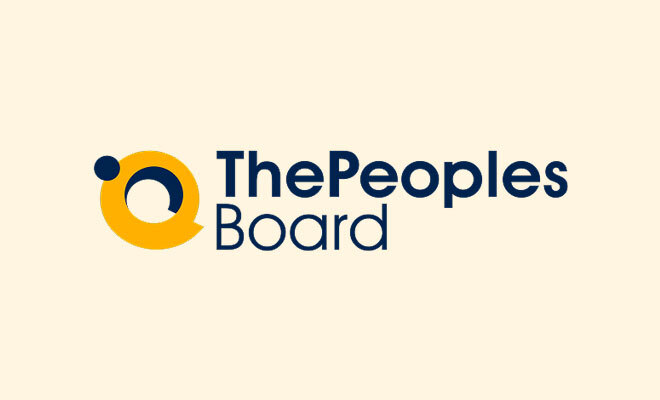Creating a workplace that values diversity, equity, and inclusion (DEI) is no longer just a trend but a necessity. For Indian organizations, embracing DEI programs and inclusion in the workplace can lead to innovation, better decision-making, and more robust employee engagement.
With India’s diverse cultural, religious, and linguistic backgrounds, implementing DEI initiatives can transform a workplace into a truly representative and inclusive space.
What is Diversity, Equity, and Inclusion?
Diversity, Equity, and Inclusion (DEI) refers to the practices and policies that promote a workplace culture where all employees feel valued, respected, and empowered to contribute their best work. DEI is essential for creating a positive and productive work environment, driving business success, and fostering a sense of belonging among employees.
By embracing DEI, organizations can tap into the diverse perspectives, experiences, and ideas of their employees, leading to increased innovation, creativity, and competitiveness. In essence, DEI is not just a moral imperative but a strategic advantage that can propel organizations to new heights.
Diversity
Diversity refers to the presence of differences within a group. In the workplace, this includes gender, age, ethnicity, language, sexual orientation, disability, education, and more.
Equity
Focuses on ensuring fair treatment, access, and opportunities for all employees while identifying and removing barriers that may prevent individuals from reaching their potential.
Inclusion
Ensures that all individuals feel valued, respected, and empowered to contribute fully, regardless of their background.
Benefits of Implementing Diversity, Equity, and Inclusion Programs
Enhanced Innovation
Diverse teams bring different perspectives, leading to innovative solutions and better problem-solving.
Improved Employee Engagement
Inclusive workplaces foster trust and make employees feel respected, improving job satisfaction and retention. Inclusion in the workplace is a critical component of diversity, equity, and inclusion (DEI) initiatives, contributing significantly to employee engagement and overall workplace culture.
Better Financial Performance
Research shows that companies prioritizing DEI perform better financially due to improved decision-making.
Strong Employer Brand
DEI programs attract top talent and enhance the company’s reputation as a progressive and responsible employer.
Compliance and Risk Management
Implementing DEI aligns with Indian labor laws and global corporate governance practices, reducing legal risks.
Strengthened Recruitment
Strengthened recruitment is a critical aspect of DEI initiatives. By implementing inclusive hiring practices, organizations can attract a diverse pool of candidates, reduce bias in the hiring process, and increase the representation of underrepresented groups in the workforce.
This can be achieved by using blind hiring practices, partnering with diverse recruitment agencies, and advertising job openings in diverse channels. Additionally, organizations can use data and analytics to identify patterns of bias in the hiring process and make data-driven decisions to address these biases.
By focusing on inclusive recruitment, companies can build a more diverse and dynamic workforce that drives innovation and growth.
Higher Employee Retention
Higher employee retention is a key benefit of DEI initiatives. When employees feel valued, respected, and included in the workplace, they are more likely to be engaged, motivated, and committed to the organization.
This leads to reduced turnover rates, improved productivity, and increased job satisfaction. Organizations can foster a culture of inclusion by providing opportunities for professional development, recognizing and rewarding employees’ contributions, and creating a sense of community and belonging.
Prioritizing DEI can ensure that a company’s employees are more likely to stay and thrive, contributing to long-term success.
Diversity, Equity, and Inclusion in India
In a country as vast and diverse as India, DEI programs encompass many aspects and greatly affect the country’s workforce. Many companies have taken strong steps to ensure that employees from varied backgrounds have an equal footing within the organization.
DEI in the workplace is an approach focused on diversity, equity, and inclusion within organizational policies. Examples of DEI initiatives include targeted recruitment of marginalized groups, workshops, and mentorship programs aimed at fostering an inclusive work environment.
There are many forms of diversity that shape the people within India. Each one of them have different connotations and reflect the societal and cultural norms of India.
Gender
Female and Transgender members of the Indian workforce have been slowly and steadily rising in numbers and are provided multiple benefits under DEI programs.
Caste
The Indian caste system has often been used as a weapon of oppression within the country to marginalize members of different communities. Initiatives from the government and companies have long aimed to eliminate this form of discrimination.
Religion
India has a highly diverse religious population, each with its cultural significance. DEI programs should ensure that all religions are respected equally and that the employees are provided with necessary sensitivity training to reduce strife from differing faiths.
Language
India has 22 official languages, along with numerous other dialects and sub-dialects that vividly describe the dynamic of the Indian population.
Culture
From local festivals to varied cuisines, many things set a culture apart in a country like India. DEI programs should ensure that employees feel comfortable participating in various events and expressing their cultural beliefs.
Physical Ability
Various DEI programs aim to provide people with disabilities a fair shot at their career goals. Their participation increases innovation as well as employee satisfaction.
Age
When not addressed properly, generation gaps can often hamper a company’s productivity and communication. DEI programs should focus on bridging the age gap and combining the positive aspects of various generational cultures.
Socio-Economic Factors
This can include wealth disparity, urbanization, and educational background. These factors are crucial to the country’s development, with DEI programs aiming to provide everyone a fair chance at progress.
Steps to Implement Diversity, Equity, and Inclusion Programs

Assess Current Workplace Culture
When it comes to evaluating the current state of diversity and inclusion within the organization, start by conducting surveys, interviews, or focus groups to gather employee feedback on their experiences.
- Use metrics like employee demographics, promotion rates, and pay equity to identify gaps.
- Assess policies and practices to see if they unintentionally favor particular groups.
Compile Data
Compiling data is a crucial step in developing an inclusion and diversity initiative. Organizations need to collect data on employee demographics, including age, sex, race, and other protected categories, to understand the diversity of their workforce and identify areas of inequity.
This data can be collected through HRIS systems, voluntary self-identification surveys, and other sources. By analyzing this data, organizations can identify disparities in representation, barriers to advancement, and differences in employee attitudes and perceptions of the company culture.
This data-driven approach allows organizations to make informed decisions and tailor their DEI initiatives to address specific needs and challenges.
Identify Needs and/or Areas of Concern
Identifying needs and areas of concern is a critical step in developing an inclusion and diversity initiative. Organizations need to review demographic data and identify areas where there are disparities in representation, barriers to advancement, or differences in employee attitudes and perceptions of the company culture.
This can include analyzing data on employee engagement, retention, and promotion rates, as well as conducting employee surveys to gather feedback and insights.
By identifying areas of concern, organizations can develop targeted initiatives to address these issues and create a more inclusive and equitable workplace. This proactive approach ensures that DEI efforts are focused and effective, leading to meaningful and lasting change.
Secure Leadership Buy-In
Leadership commitment is crucial for DEI’s success. Educate executives on DEI’s benefits and how they align with organizational goals.
- Appoint a Chief Diversity Officer or create a DEI task force to drive initiatives.
- Encourage leaders to model inclusive behavior, as their actions set the tone for the rest of the organization.
Set Clear Goals and Metrics
Define what success looks like for your DEI program. Create specific, measurable, achievable, relevant, and time-bound (SMART) goals.
Examples:
- Increase representation of women in leadership roles by 30% within three years.
- Conduct quarterly DEI training sessions for all employees.
Develop Policies and Frameworks
Revise existing policies and create new frameworks to support DEI efforts.
- Implement anti-discrimination and anti-harassment policies.
- Introduce flexible work arrangements and parental leave policies to support diverse needs.
- Establish mentorship programs to help underrepresented groups advance in their careers.
Foster Inclusive Recruitment
Modify recruitment practices to ensure equal opportunities for all candidates.
- Partner with organizations that support diverse talent pools, such as NGOs for people with disabilities or women’s networks.
- Use gender-neutral language in job descriptions and focus on skills rather than background.
- Train hiring managers to recognize and eliminate unconscious bias during interviews.
Educate and Train Employees
Regular training is vital to building awareness and fostering inclusive behavior.
- Organize workshops on unconscious bias, cultural sensitivity, and inclusive leadership.
- Use e-learning platforms for continuous education, ensuring accessibility for all employees.
Celebrate Diversity
Acknowledge and celebrate the diversity of your workforce to create a sense of belonging.
- Host events and initiatives for cultural festivals, LGBTQ+ Pride Month, or Women’s Day.
- Create employee resource groups (ERGs) to provide support and networking opportunities for specific communities.
Provide Support Systems
Ensure employees feel supported throughout their journey.
- Set up grievance redressal mechanisms for reporting discrimination or harassment.
- Provide mental health resources tailored to the unique needs of diverse groups.
Measure Progress
Track the effectiveness of DEI initiatives and make adjustments based on the results.
- Use employee surveys, retention rates, and pay equity audits to measure success.
- Share progress reports with stakeholders to maintain transparency and accountability.
Challenges in Implementing DEI Programs
- Resistance to Change: Employees or leaders may resist new policies due to biases or lack of understanding.
- Lack of Resources: Smaller organizations may face challenges in allocating time and funds for DEI programs.
- Unconscious Bias: Addressing deeply ingrained biases takes time and consistent effort.
- Cultural Sensitivity: India’s vast diversity can make addressing every group’s unique needs challenging.
DEI Programs and Indian Laws
In India, several laws and initiatives support diversity and inclusion:
The Rights of Persons with Disabilities Act, 2016
The Rights of Persons with Disabilities Act encourages organizations to make workplaces accessible for individuals with disabilities.
The Sexual Harassment of Women at Workplace Act, 2013
The Sexual Harassment of Women at Workplace Act mandates establishing Internal Complaints Committees to address workplace harassment.
Maternity Benefit (Amendment) Act, 2017
Maternity Benefit (Amendment) Act provides maternity leave and childcare support for working mothers.
The Transgender Persons (Protection of Rights) Act, 2019
The The Transgender Persons (Protection of Rights) Act prohibits discrimination against transgender individuals in employment.
Conclusion
Implementing diversity, equity, and inclusion programs is not just about meeting legal requirements or enhancing a company’s image—it is about creating a workplace that truly values and respects every individual.
For Indian organizations, embracing DEI can unlock untapped potential, foster innovation, and build a stronger, more cohesive workforce. Starting small but aiming big helps toward a brighter, more equitable future.





